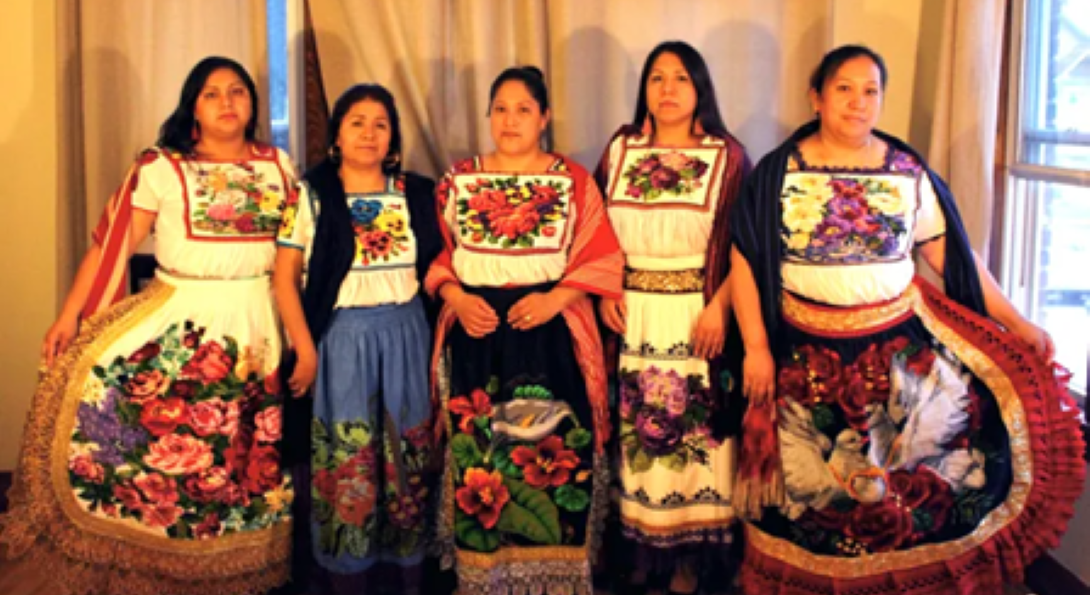19 November 2024: Spanish Peer Tutor Valeria writes on Purépecha culture and traditional clothing

Introduction
In the state of Michoacán, where my family is from, the indigenous community of the Purépechas can be found. A big part of indigenous communities is their traditional clothing which is known as ropa típica / tradicional. Growing up, ropa típica was something I saw often when going to Mexico, and something that my family members and I would wear too on special occasions while in Mexico.
My favorite part of the outfit was always the Huanengo, also commonly known as the Huipil in other parts of Mexico. The Huanengo is a type of blouse with embroidery of different designs, but most commonly flower designs. The Huanengos are usually very colorful and vibrant, including many different colors, and sometimes even have beadwork. My Huanengo is white with purple flowers and was given to me by my mom.
The Huanengo is traditionally worn with a skirt called the Nagua. The Nagua, like the Huanengo, can be many different colors as well as can have lace or sequins that make them look shiny. Traditional Naguas are very heavy with many layers, but nowadays they are made from one piece of lightweight fabric and are usually black. My mom and aunts would always tell my cousin and I how they would have to wear heavy Naguas when they were younger, and how the ones my cousins and I have now are nothing like what they had. This is something I often think about whenever I wear mine while in Mexico or for certain holidays.
One of the last pieces to the outfit is the Delantal. The Delantal covers the front of the Nagua and can have many different designs and sequins as well. The Delantal is truly one of the eye-catching points of the traje típico mainly due to the designs and beautiful craftsmanship. My Delantal is fairly simple in design but is made out of sequins which gives it a nice look. My grandma on the other hand has a beautiful one that she has kept for many years with floral designs intricately embroidered into it.
For me, wearing the traje típico is something I find pride in wearing when I get the chance to. This is mainly because it holds a sense of identity of where my family is from, Michoacán, Mexico, but also because it holds years of traditions that are deeply embedded into the culture.
19 November 2024: Spanish Peer Tutor Valeria writes on Purépecha culture and traditional clothing
References:
https://craftychica.com/2024/02/a-quick-guide-to-latin-american-textiles/
Falda, huanengo y delantal: símbolos de identidad para la mujer Purépecha